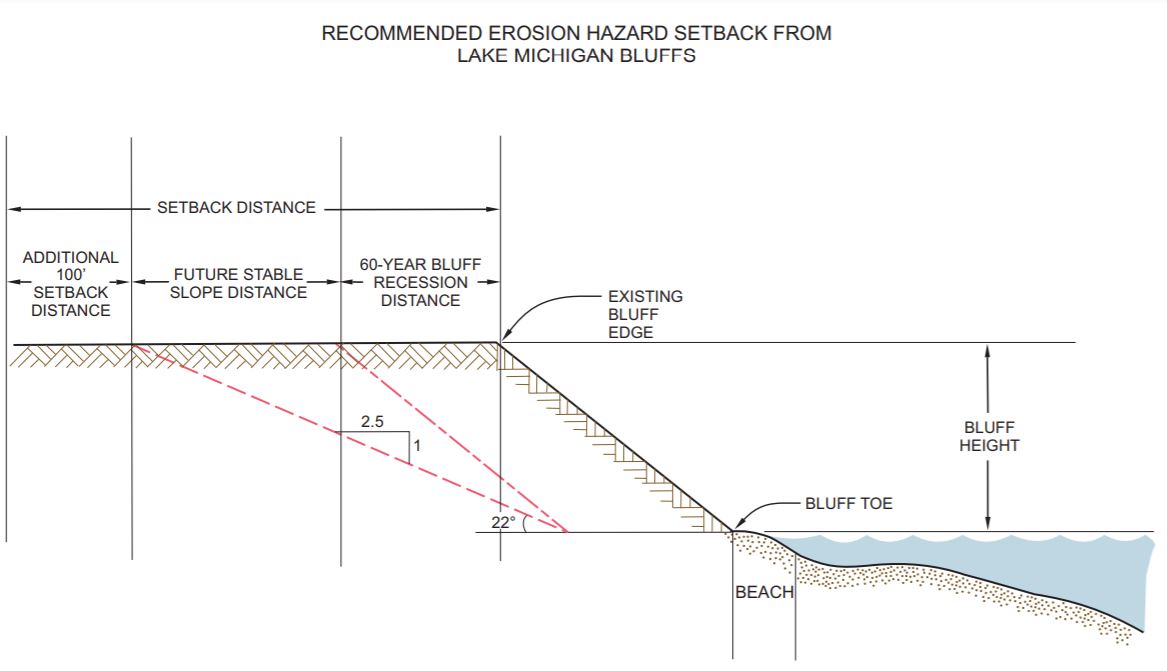
A document that details an example community zoning ordinance that could help reduce the risk of developments being exposed to coastal hazards.
Model Ordinance for Lake Michigan Bluff Setbacks
Overview
The Southeast Wisconsin Regional Planning Commission’s (SEWRPC) Model Zoning Regulations for Lake Michigan Bluff Setbacks is a document that details an example community zoning ordinance that could help reduce the risk of developments being exposed to coastal hazards and limit the impacts of those hazards to the shoreline. The ordinance can include provisions on setback distances from the bluff edge for new development or redevelopment, building relocation, vegetation removal, stormwater management, on-site waste disposal, or the use of shore protection devices, as well as requirements for engineering or geotechnical analyses of proposed site modifications that may affect safety or bluff stability. The model also includes guidance for calculating a stable bluff slope and recommends including a setback equivalent to a 60-year beach recession distance and a 100-foot setback from the top of the calculated bluff (to provide for uncertainties related to future stable slope angles, recession rates, the effect from nearby shore protection structures, and other factors). These recommendations provide a general guidance for determining a safe setback distance; however, a professional assessment should be done to determine the extent of the bluff’s stability and what a safe setback distance is at each specific site. This document is available to download for free.

Source: University of Wisconsin Sea Grant Program & SEWRPC
Audience
This document is written for municipalities to utilize as an example when implementing or amending setback ordinances for Lake Michigan coastal properties. This model ordinance can also be useful to property owners who want to better understand what a safe setback distance entails and to use as a planning tool for new coastal developments or house relocation projects. The document includes a brief introduction, the model ordinance language, key definitions, references to additional materials, and contact information for SEWRPC to help the audience understand the context for the ordinance and how it could be useful for them.
Decision Support
SEWRPC states that these regulations are intended for application in areas where new development may occur as it would be difficult to implement such standards in areas of existing urban development. The ordinance can be incorporated into existing county, city, village, or town zoning ordinances, including a county shoreland zoning ordinance. In urban areas where this ordinance may not be applicable, other management strategies such as bluff stabilization, subsurface and surface water control, of bluff toe protection may need to be utilized to increase the resiliency of the Lake Michigan shoreline. Additional recommendations and sources of information about zoning ordinances, bluff setbacks, and coastal protection strategies are available from SEWRPC, county hazard mitigation plans, and Wisconsin Sea Grant.
SEWRPC: https://www.sewrpc.org/SEWRPC.ht
Wisconsin Sea Grant Institute publications: http://publications.aqua.wisc.edu/




